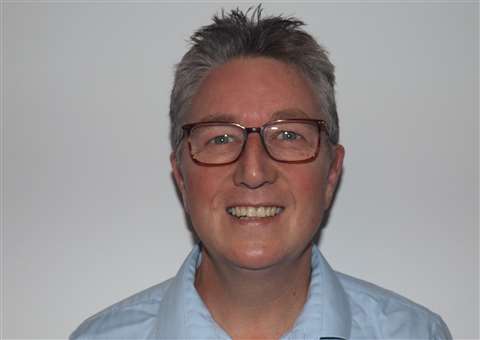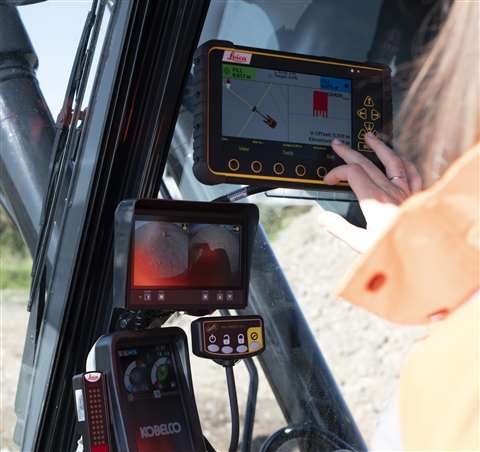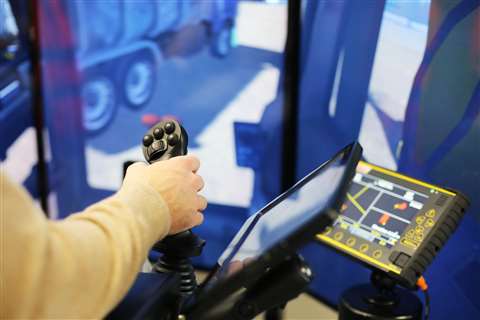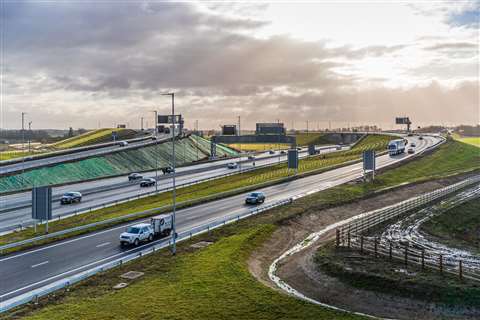How designing for machines increases productivity
05 January 2022
Design for Machines and the Productivity will come. Peter Haddock talks to Mark Lawton, Head of Engineering surveying and GIS at Skanska, about the future of machinery and the connected site…
 Mark Lawton, Head of Engineering Surveying and GIS at Skanska.
Mark Lawton, Head of Engineering Surveying and GIS at Skanska.
The dividing trench between UK earthworks PLC and the rest of the construction industry is set to be filled in by three simple words’ Design for Machines’.
They may be simple words, but they are fundamental to a change in approach and mindset that is accelerating through the sector, from large customers like National Highways and HS2 to Tier 1 contractors like Skanska.
It’s thanks to people like Mark Lawton, the Plant & Earthworks Community representative to National Highways and Head of Engineering surveying and GIS at Skanska, that this and other messages are finally getting through.
To find out more, I recently caught up with Mark at the Highways UK show, some two years after we first met at the same show in 2019.
At this first event, we discussed his future vision for the ‘Connected Worksite’ and why he had become an active and vocal member of the Continuous Automated Plant (CAP) Community.
This is a collaborative group of industry leaders and influencers formed to investigate the current technology, future possibilities, and ways to overcome hurdles to an autonomous future.
The industry has definitely moved forward at a pace in the last two years. Still, Mark’s passion for accelerating further change in work practices, safety and the adoption of innovation, has continued to grow.
Lawton said, “Our work is focused on changing the industry and all the things we aim to do are driven to improve safety onsite.

3D machine control in construction
“Two years ago, the industry took a major step forward as 3D machine control was mandated on National Highways projects.
“Since then, the adoption of machine control has grown so rapidly that it’s like a ‘Herd of Elephants coming over the hill,’ said Lawton.
“In other words, we are now faced with feeding all of these data hungry machines, and in order to keep them full, busy, productive and efficient, we need to design models that they can consume.”
What does ‘design for machines’ mean?
Lawton added, “After all, machines are like robots. They just need simple instructions to operate. This is why we now need to ‘Design for Machines’ not just for projects. But what does that mean?
“In simple terms, client surveyors and engineers have been using 3D modelling now for some time, creating whole project models that reflect the complete site delivery elements.
“So whether it’s the construction of motorways or railways, which include structures like bridges, tunnels and viaducts or a housebuilding site with plots, roads and utilities, a full site model is now commonplace,” said Lawton.
Project data designed for machine use
“However, the problem with these models and simpler 2D models supplied by clients for less complex projects is that the data can’t simply be translated into a file needed to support machine control. Inevitably this leads to a new model having to be created for the earthworks element of a project.
“Feeding the ‘as built’ data from the earthworks side of the project then becomes disconnected from the main model and software used to control the whole programme of works.
“We lose all of the benefits real-time data capture, processing, and analysis can deliver to a project when this happens.”
Advancing machine control and construction worker training
When we look at machine control adoption and the challenges being tackled in its roll-out, we see the industry coming together to create solutions.

“For example, leading players like Flannery Plant Hire, Plantforce and Lynch Plant Hire have all recognised the need for training and upskilling.
“All three businesses have invested in training centres, people and technology like simulators to help operators use new technologies like machine control.”
“We only have to look at the successful delivery of the A14, under budget and opened early thanks in part to the use of 3D machine control,” said Lawton.
Located between the East of England and the Midlands, the £1.5 billion A14 redevelopment scheme aimed to improve journey times and safety for the 85,000 vehicles that use the route every day.
Construction of the new road layout began in November 2016 and involved a total of 13,000 people - with up to 2,500 working on site during the project’s peak.
It was completed in February 2020, on budget and more than six months ahead of schedule.
 The A14 improvement scheme between East Anglia and the Midlands in the UK.
The A14 improvement scheme between East Anglia and the Midlands in the UK.
National Highways’ A14 improvement scheme
“This was managed effectively due to the creation of an Integrated Delivery Team (IDT), a joint venture between Balfour Beatty, Costain and Skanska, design consultants Atkins and CH2M and client National Highways,” said Lawton.
“The IDT brought together six management teams, each responsible for an individual section of the scheme, into a single, highly effective delivery model.
“Thanks to a 12-month early contractor involvement programme, which I was involved with, we determined how to create and manage effective earthworks models before equipment came onto site.”
“It was a real testbed for collaboration from client to contractor to earthworks specialist,” he said.
“What the A14 did highlight was the need to get the right skillsets together for a project and understand the investment challenges needed to purchase new equipment and technology for the full life of the job.
“The experience gained and shared from this project has given confidence for greater collaboration in the industry and the acceleration of technology adoption across the board.”
Lawton added, “We are definitely on a transformative journey in the construction and earthworks sectors, and it’s not ended yet…”
*Mark Lawton’s full interview, which features more on the future of machinery and the connected site, was first published by the CEA in the March issue of Construction Worx. To find out more, click here.
STAY CONNECTED



Receive the information you need when you need it through our world-leading magazines, newsletters and daily briefings.
CONNECT WITH THE TEAM







